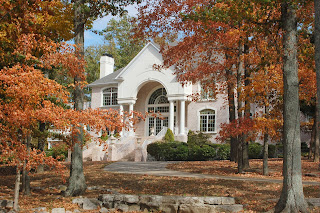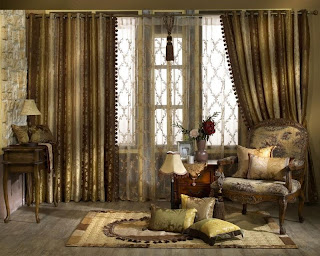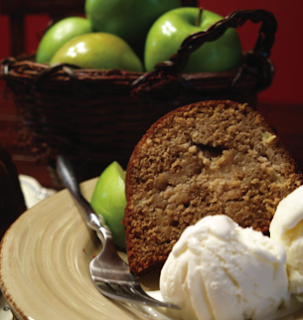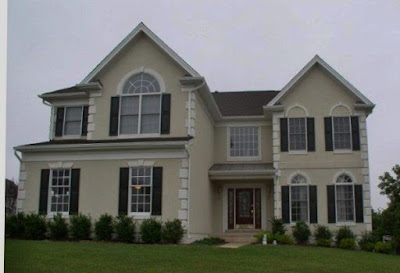September issue of Kim Kroner’s Home & Lifestyle
 September issue of Kim Kroner’s
Home & Lifestyle
September issue of Kim Kroner’s
Home & Lifestyle

Real Estate: Selling
your home during September…
Summer is unofficially
over, it's September and you are selling your home entering into the fall and
winter months. With light dwindling and temperatures dropping, evaluating your
home with regard to warmth is a smart idea. Homes that are warm in the winter
(and cool in the summer) are highly desirable - and achievable, if the savvy
homeowner knows where to look and what to do to control the interior
environment.
 When showing a home in
the fall and winter months, pay attention to how warm you feel in the home, how
the spaces are heated, how to control the heat and moisture, the presence of
natural light, and how warm they are to the eye. When showing a home during
these months, you will want to ensure that the warming aspects of the home
stand out.
When showing a home in
the fall and winter months, pay attention to how warm you feel in the home, how
the spaces are heated, how to control the heat and moisture, the presence of
natural light, and how warm they are to the eye. When showing a home during
these months, you will want to ensure that the warming aspects of the home
stand out.
How is
your home heated?
Understanding the
heating system of a home is key information for many buyers. The type of
heating used is often dictated by the fuel that is most readily available (or
was, at the time of building) and can be the source of a significant expense in
cold weather climates. Information to have available for potential buyers
include:
v Type of heating system(s) in all areas of the
home.
v How the heat works and best practices for using
the system(s) including the presence of a programmable thermostat. For example,
radiant floor heat takes a while to warm large spaces and continues to radiate
heat once off; knowing this, scheduling heat to turn on hours before arriving
home from work, and to turn off hours before retiring for the night makes total
sense.
v Source of energy, and operational costs.
v Age of the system and maintenance history, if
available.
Fireplaces, Stoves, and
Inserts
There
something about seeing a fire in a fireplace that warms the heart - even
"false" flames of electric fireplaces add a warming visual effect.
However, traditional fireplaces often draw in warm air from the home which is
lost up the chimney, in fact, cooling the rest of the home.
Fireplaces are not highly efficient ways of
heating a home, without some assistance. Enter the blower: fan systems that
distribute heat from the fire back into the room rely on electricity to work,
but enables homeowners to benefit from the heat generated by the fire itself.
Better yet, an insert, or sealed stove that uses the chimney but takes in air
efficiently and puts out considerably more heat is the preferred method for
increasing warmth. Russian fireplaces or other variations can be a boon in very
cold climates, but take a moment to understand how to efficiently use them to
see if these sometimes expensive bonuses fit with your lifestyle. Like radiant
heat, they are slower to warm and cool down, so fires should be monitored and
made at specific times.
Stoves that generate
heat can rely on a variety of fuels, typically including wood, propane, and
pellets (which are made of wood by-products). Ensuring that the stove is
installed properly, well-vented, and airtight is essential for health and
safety. Chimney fires in stovepipes can be quite dangerous, so it is essential
to regularly have the stove serviced by a professional.
Spot Heating with
Stand-Alone Heaters
On some occasions,
free-standing heating units such as electric "space heaters" or
propane heaters are handy to own. However, these appliances can be tricky to
use and require that you follow explicit safety instructions. Their cords or
fumes could present safety issues. A better practice might be to solve the
problems that require their use.
Keeping Heat In
Heating a space is only
part of the warming equation. Keeping the space warm is achieved by capturing
that heat and retaining it. Appropriate insulation and attention to places
where heat may escape are key points to consider. Insulation in walls and attics
should be clean and dry, free from signs of animal infestation. Windows in
cooler climates might be double or triple-glazed, and doors and windows should
close tightly and no drafts should be present around them. Caulk and seal
around window frames, if needed, and pay attention to areas that seem
particularly prone to cooling down quickly.
Architectural features
of the home can also help with regard to a home's warmth. Entryways are more
functional in colder climates if there is a way to avoid cold air and weather
from sweeping into the home. Covered porches or enclosed "northern
entryways" are essentially vestibules than afford a transition from the
frigid outdoors to the warmth of your home. "Mudrooms" or other
utility spaces such as garage entryways can help retain heat, though if they
are to be highlighted features of a home, they should be attractive and
well-kept.
Some rooms in the home
will naturally be warmer than others. When showing a home, be present to this
fact and decide if you will "close off spaces" by shutting doors to
conserve heat in some living areas, or if you will seek to warm cooler spaces
by keeping doors open.
Insulating hot-water
heaters could be a plus if they are located in a cooler location such as a
basement or garage and ensuring that water pipes are insulated is also useful
to homeowners in frigid areas. Attention to these details shows that the home
is well-cared for and ready for anything.
Warming
"Accessories"
Some bonus features that
jump out and say "warm" include hot-tubs, saunas, steam rooms, and
sun rooms. Others are less noticeable, but also great, warming perks. The same
ceiling fans that move air in the summer to create a breeze can move warm air
from high spaces where it isn't being effective. Towel warming bars, heat
lamps, or radiant floor heat in bathrooms can offer spot warmth in places that
are most appreciated.
Heated workrooms,
storage spaces and garages are a huge bonus to some families. Showcase these
areas by keeping them neat and functional, including lighting and easy access.
If the home is in a
locale where power outages are common, generators and homes wired to
accommodate their use are especially appreciated. Understand the system in
place, the age and repair of the generator and the electrical panel, and how to
switch things back and forth between electrical systems. Be sure that there is
fresh fuel available for the generator, and that it is stored safely.
In the fall months,
decks can become more usable with outdoor heaters, generally run on propane, or
small fire pits. These warming accessories can make the most of outdoor spaces,
showing that they can be used year-round.
Décor is More, and More!
Finally, décor can add a
great deal of warmth which may be achieved by the appearance and organization of
the home. Color choices, fabrics, curtains and draperies, decorations and even
lighting can add degrees of warmth. The trick is to engage all of the senses.
Light
the dark corners with warm lights. Enabling people to see your space in a warm
glow makes rooms appear lighter on shorter days that might be grey. Consider
pulling out an afghan or lap blanket for the couch and swapping the warming
colors of autumn in pillows and window treatments. Heavier drapery can retain
heat and give your rooms a weightier, cozier feeling, while also retaining heat
and adding privacy.
In general, adding
texture and fabrics will warm a room. While bare tables can be cooling in the
summer, adding a tablecloth or runner in the winter adds to the warmth of a
scene. Similarly, place fall flowers and plants in rooms to bring the viewer
into the season. Consider the closest holidays and seek to bring touches of
cheer into the space. Don't fill or clutter spaces, but consider the details
that warm the eye. Adding carpets or area rugs will warm the floors and add
visual warmth, without adding bulk to a room. This goes for bedrooms as well as
living spaces, so be sure to scan each room with a warming eye.
In cool months, cooking can add warmth to your
home as well. A bubbling pot of soup, baking cookies or bread, or even a pot of
tea will provide the smells that evoke a sense of heat and well-being. Candles
also put out heat as well as light, though be certain not to leave them
unattended. Scented candles can be difficult if a guest is sensitive to scents
or chemicals, and may be perceived as covering up pet smells, so use these with
care.
Life
Style
MAPLE APPLE CAKE
Servings: 8 to 10
Prep time: 15 minutes
Bake time: 50 minutes
1½ cups white flour
1½ cups whole wheat
flour
1¾ teaspoons baking
powder
1¾ teaspoons baking soda
⅓ teaspoon nutmeg
1 tablespoon cinnamon
½ cup plus 2 tablespoons
butter, melted
1¼ cups maple syrup
3 eggs
2 tablespoons vanilla
⅔ cup buttermilk
2½ cups Granny Smith
apple, peeled and chopped
Topping:
1 cup flour
½ cup cold butter
¾ cup brown sugar
Preheat oven to 350
degrees. Sift dry ingredients together. In a separate large bowl, combine the
remaining ingredients except the apples. Add the sifted dry ingredients to the
wet ingredients and mix just enough to blend. Add the apples. Be careful not to
overmix. Pour the batter into a greased Bundt pan.
Blend the topping
mixture together and sprinkle it generously over the batter. Press the topping
into the batter. Bake for 50 minutes, or until a tester stick inserted in the
center comes out clean. Serve warm with cinnamon or vanilla ice cream, or serve
cool the next day. Recipe by Laura Swayne. Photography by Heath Anyan.
END OF SUMMER SENSATION
Servings: 1
Prep time: 5 minutes
1 cup low-fat cherry yogurt
¼ cup cranberry juice
1 cup frozen pitted cherries
¾ cup frozen unsweetened blueberries
Combine yogurt and juice in blender. Add cherries and berries; blend until smooth.
Chef’s Hint: Feel free to add different fruits, yogurts, or juices to create your own signature flavor combination. It’s fun and easy to get creative with smoothies. If you like a thicker smoothie, add an extra handful of frozen fruit, crushed ice, or a bit more yogurt. Recipe by Laura Swayne. Photography by Kathi Inglesby.
In addition to working
with homeowners seeking to buy and sell their own homes, I often work with
these same clients in assisting them with purchasing investment real estate.
Knowing the rental
market and which properties produce the best investment opportunities are just
a few of the valuable resources I can provide.
If you have an interest
in learning more about investing into real estate, I would like the opportunity
to share my experiences and those of my clients with you.
Please send me an email
or give me a call at (703) 946-2526 if you are ready to explore the
opportunities of investment real estate.

.jpg)





Comments
Post a Comment